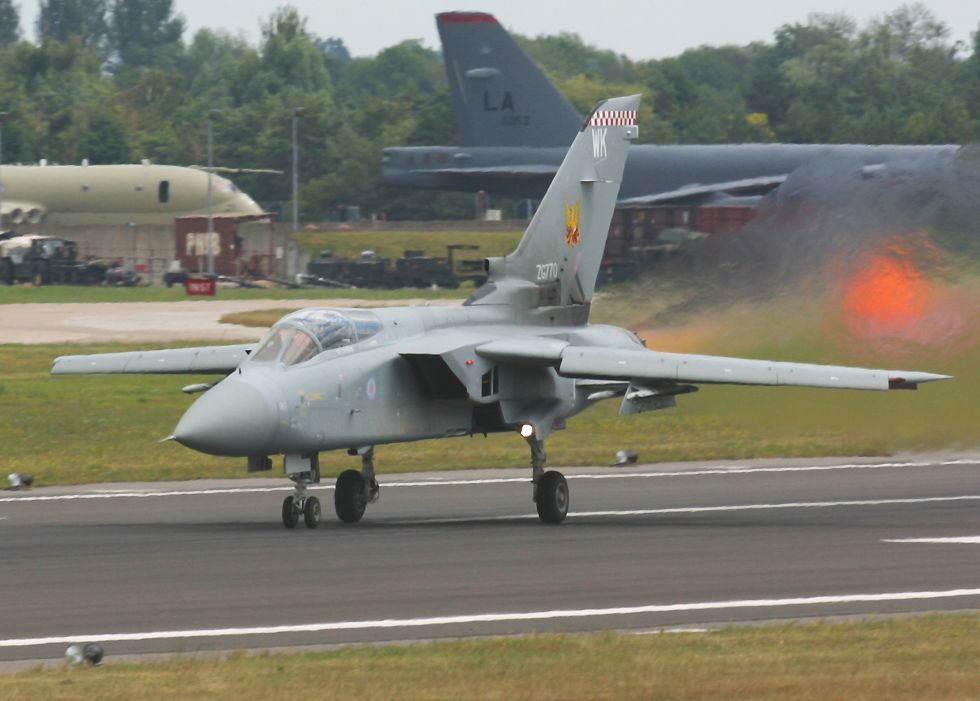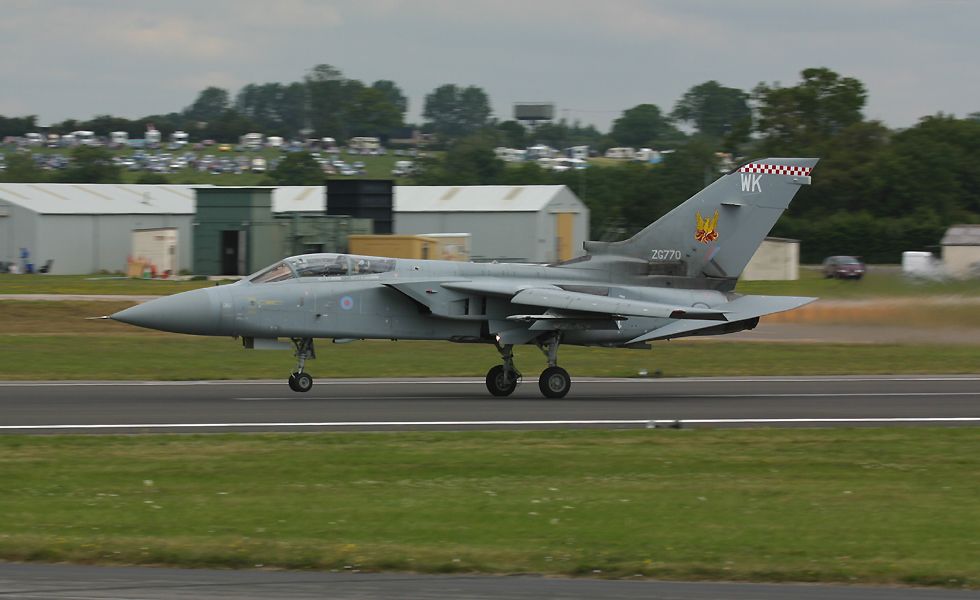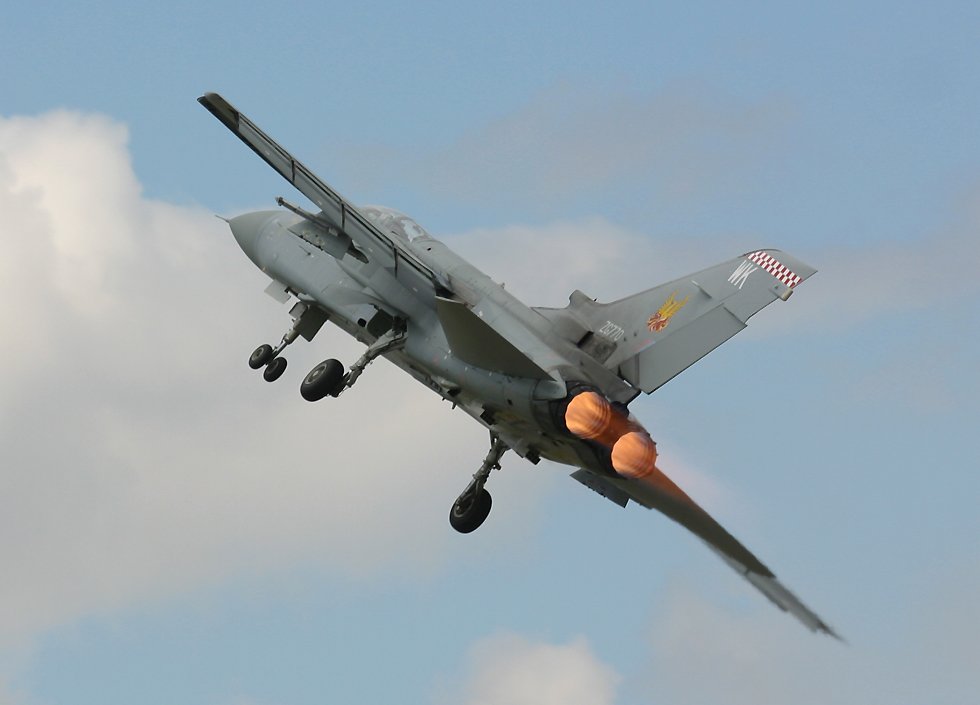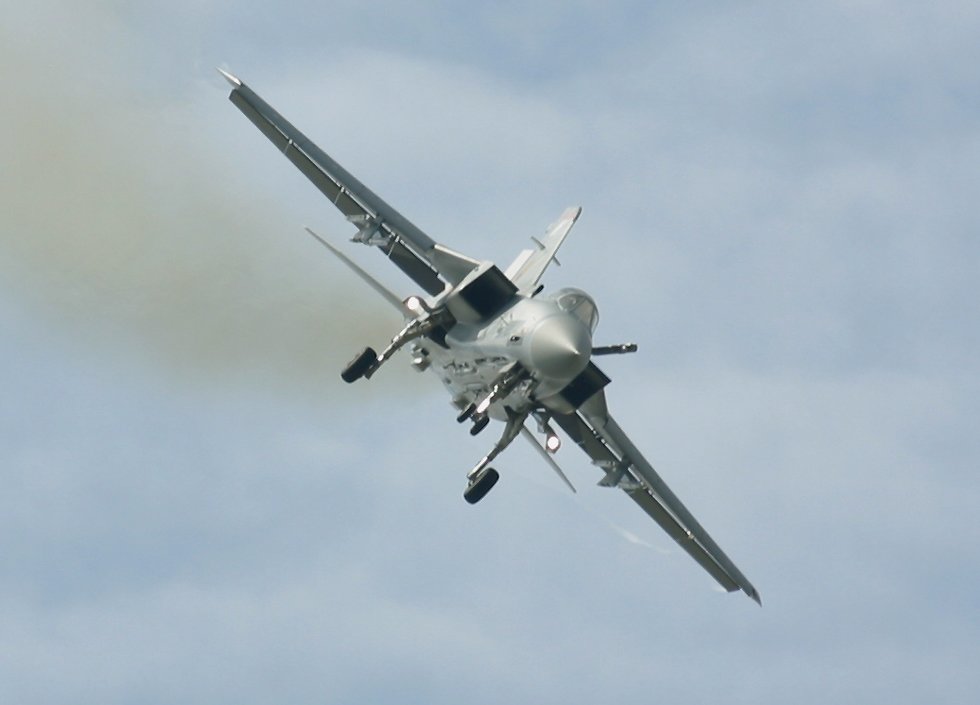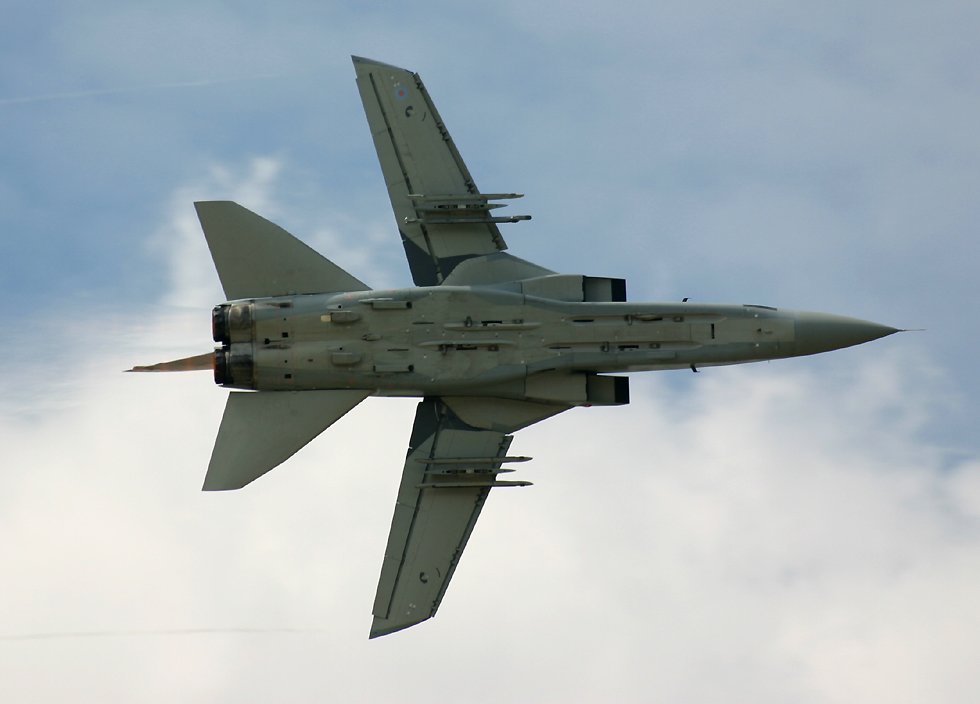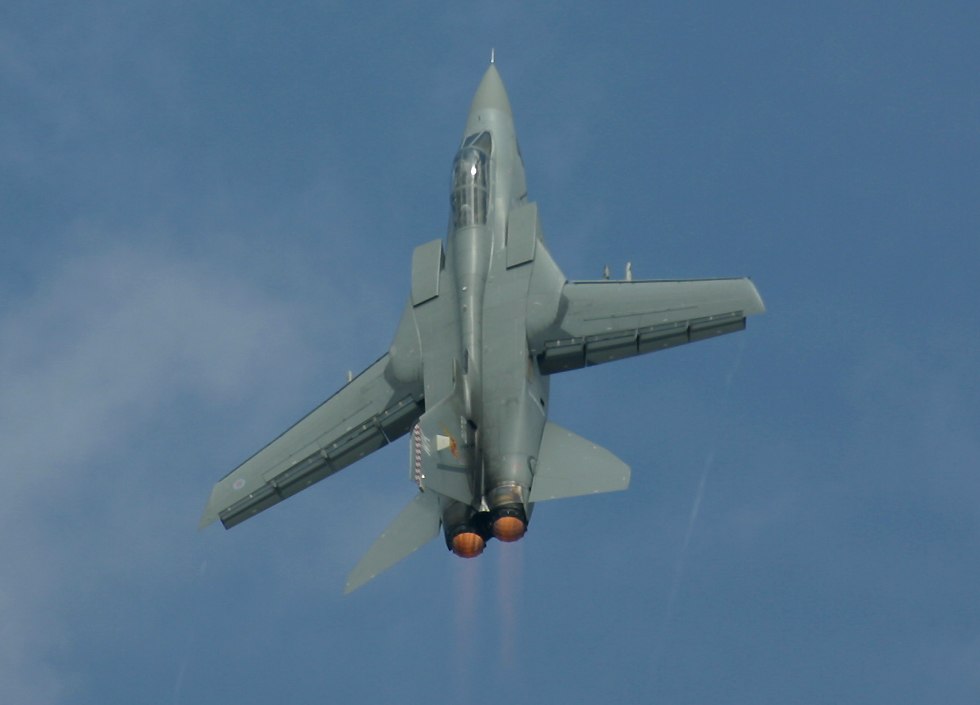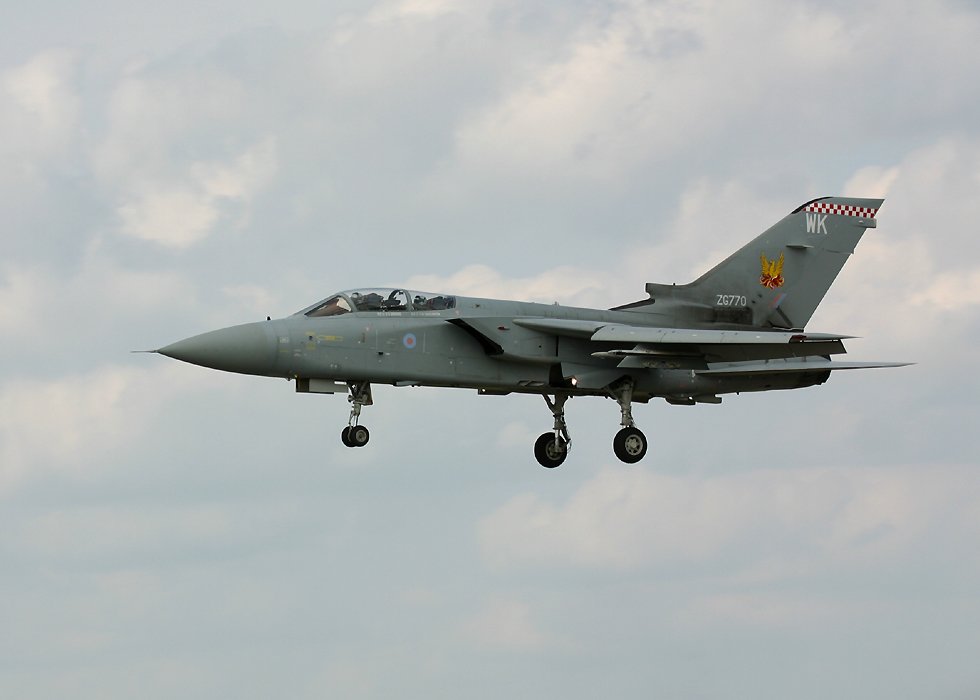RAF Tornado at RIAT 2002
|
The intention was to produce a two-man, multi-role aircraft for use in a European war between the Western European NATO alliance and the communist Warsaw Pact countries. |
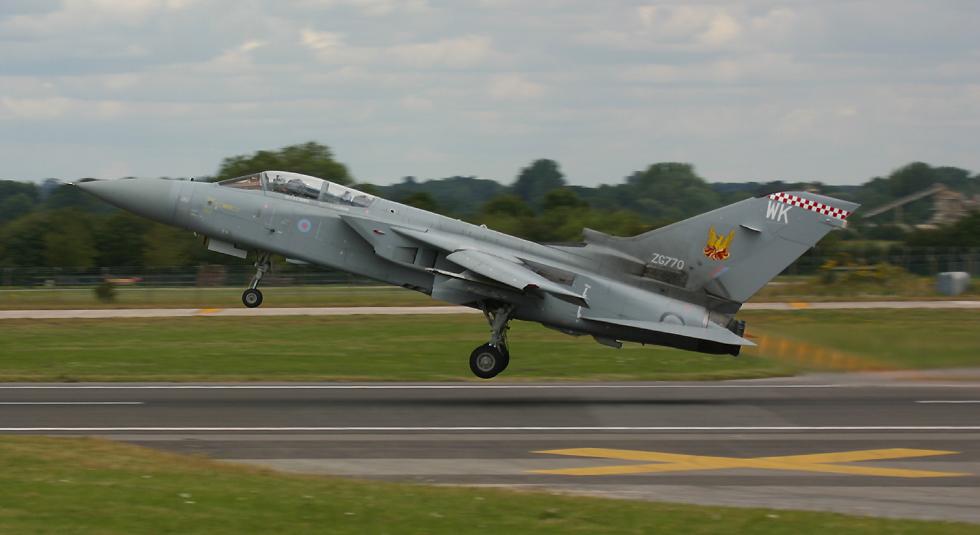 |
|
Planning started in 1968, the first prototype flew in 1974 and it entered service with the Royal Air Force in 1980. |
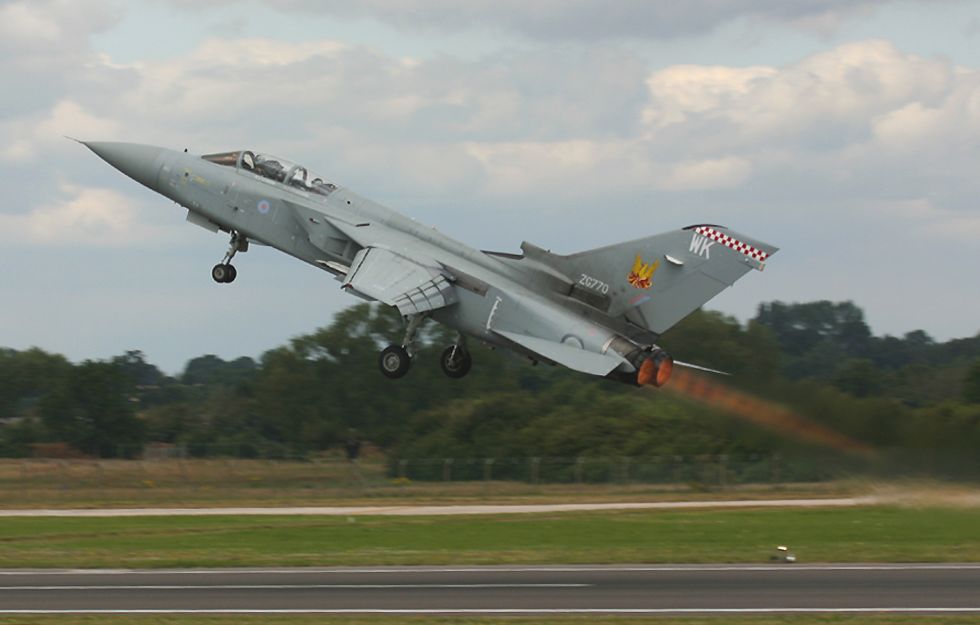 |
|
A "variable geometry" swing-wing arrangement was adopted, here you can see the wings in their fully-backward position during a high speed pass. |
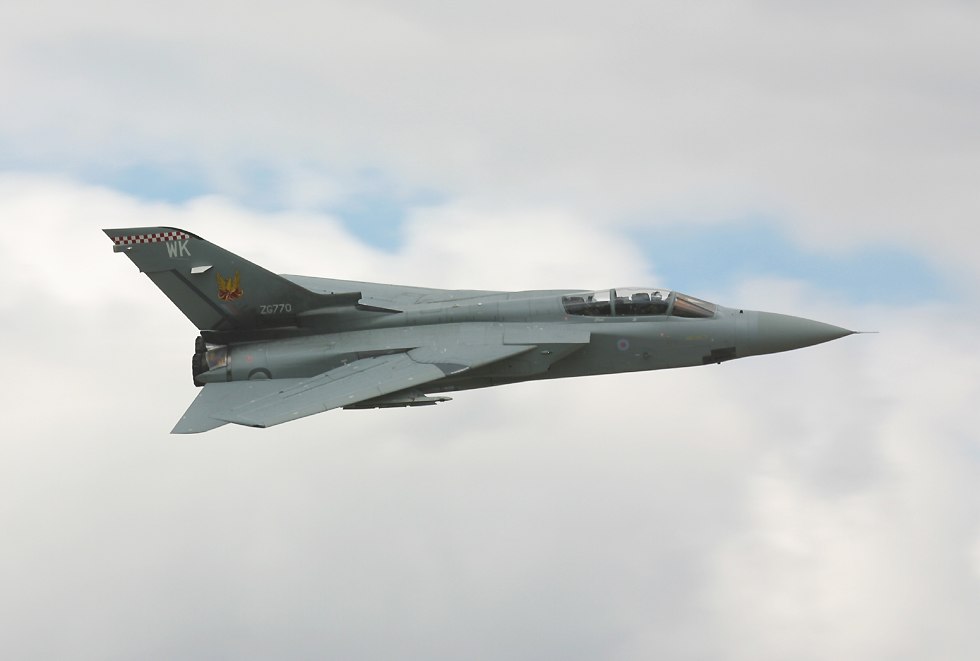 |
|
Saudi Arabia is the only country to buy the Tornado apart from the original three European partners. The Saudis received the first of their 96 aircraft in 1986. |
 |
|
The thrust reversers visible at the rear allow the plane to land on the same damage-shortened runways it took off from, but they produce a characteristic sooty patch on the tail from the hot gases which are directed forwards. |
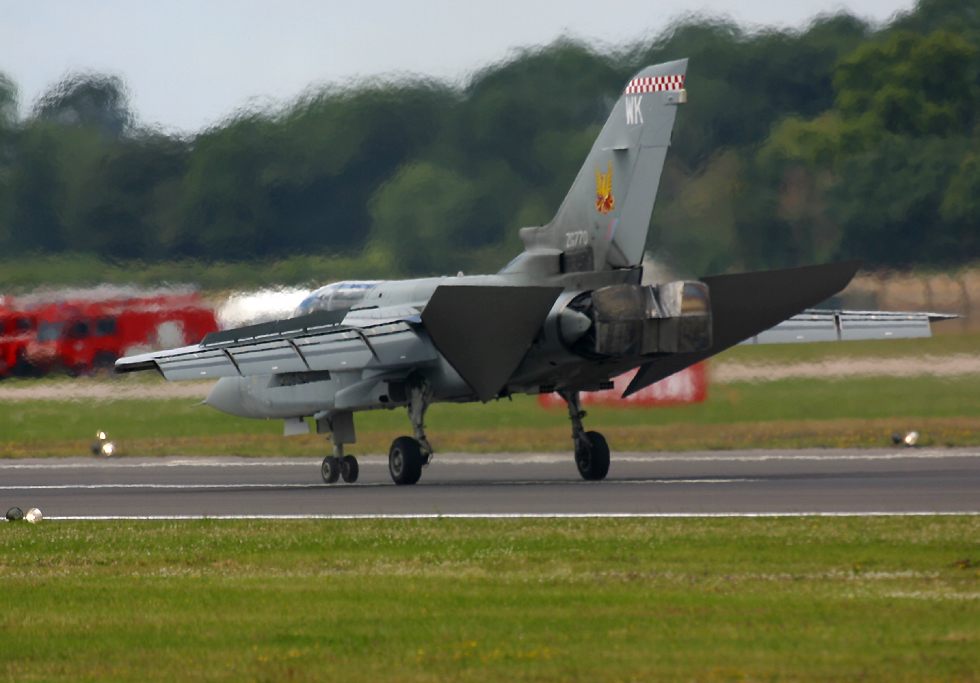 |
|
Tornado displays might be dull for British enthusiasts, but in America they're an extraordinarily rare sight. However the German Air Force contingent at Holloman air force base in New Mexico put on a display which might make even a British fan take notice, including a simulated buddy-refuelling display. |
